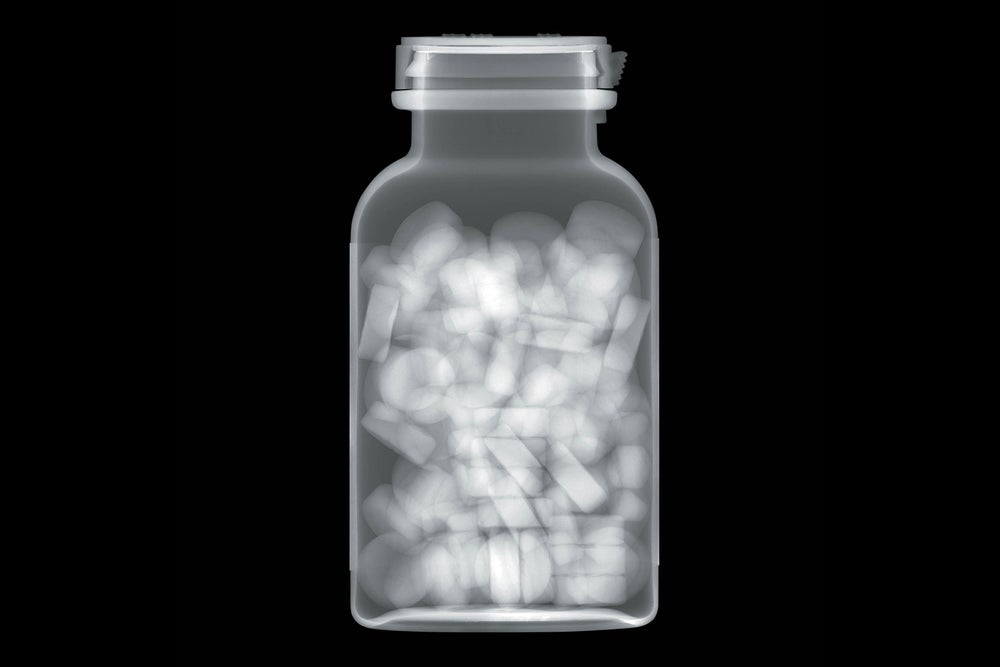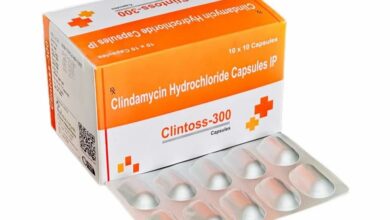
Why FDA warning against teething meds? This post delves into the FDA’s concerns surrounding teething medications, exploring potential risks and offering safer alternatives. Understanding the ingredients, potential side effects, and the reasoning behind the FDA’s warnings is crucial for parents. Let’s examine the complexities of this issue.
The FDA’s cautionary stance on teething medications stems from documented safety issues, particularly with certain ingredients. Many of these medications contain substances that can pose health risks to infants and young children, and these risks often outweigh the perceived benefits. This article will provide a comprehensive overview of the concerns, exploring potential alternatives and offering a deeper understanding of the FDA’s position.
FDA Safety Concerns Regarding Teething Medications
Teething can be a challenging time for infants and young children, often accompanied by discomfort and irritability. Parents often seek relief for their little ones, leading to the use of teething medications. However, the FDA has raised significant safety concerns about these products, highlighting potential risks that parents should be aware of.The FDA’s concerns stem from the potential for serious adverse reactions, particularly in vulnerable populations like infants and toddlers.
Many teething medications contain ingredients that, when ingested, can cause significant health problems. Understanding these concerns is crucial for making informed decisions about your child’s care.
Safety Concerns Regarding Ingredients
Teething medications often contain ingredients that, while seemingly harmless, can pose significant health risks when ingested, especially in large quantities or in combination with other medications. Some common ingredients that raise safety concerns include:
- Local Anesthetics: Certain local anesthetics, frequently used in teething gels, can cause adverse reactions, including seizures, difficulty breathing, and heart problems. Their use in infants and toddlers carries a high risk of overdose due to their potent nature.
- Analgesics: While pain relief is a key aspect of these medications, some analgesics, if not used carefully, can lead to organ damage, particularly in the kidneys and liver. Overuse or long-term exposure can be harmful to a child’s developing organs.
- Anti-inflammatory Compounds: Some anti-inflammatory compounds, while useful for reducing inflammation, can have adverse effects on the gastrointestinal tract, including stomach upset, diarrhea, and vomiting. These reactions can be particularly severe in infants and young children.
- Antihistamines: Antihistamines, while used for other conditions, may not be suitable for teething relief and can cause drowsiness, difficulty urinating, and in rare cases, allergic reactions. The potential for these effects is higher in children.
Potential Health Risks for Infants and Young Children
The young age of infants and toddlers makes them particularly vulnerable to the potential risks associated with teething medications. Their developing organs and immune systems are more susceptible to adverse effects. The small size of young children also increases the risk of overdose, which can be fatal in some cases.
- Drug Interactions: Teething medications can interact negatively with other medications a child might be taking, exacerbating side effects or creating new complications. This interaction is especially significant if the child is receiving other treatments, either prescribed or over-the-counter.
- Chronic Health Conditions: Children with pre-existing health conditions, such as kidney or liver problems, are at increased risk of experiencing adverse effects from teething medications due to the impact on these vital organs.
- Long-Term Effects: Repeated use of teething medications, even in seemingly small doses, may have long-term, unforeseen consequences on a child’s developing health, possibly affecting their growth and overall development.
Adverse Reactions Reported
Numerous cases of adverse reactions have been reported in relation to teething medications. These reactions vary in severity, but they highlight the potential dangers of these products.
- Gastrointestinal Issues: Common adverse reactions include nausea, vomiting, diarrhea, and abdominal pain. These symptoms can be distressing for the child and can disrupt their daily routine.
- Neurological Issues: In rare cases, teething medications have been linked to neurological problems such as seizures, dizziness, and difficulty coordinating movements. These are serious side effects that demand immediate medical attention.
- Allergic Reactions: Allergic reactions to ingredients in teething medications can range from mild skin rashes to severe anaphylaxis. Such reactions require immediate medical intervention.
Comparison of Teething Medications and Associated Risks
| Type of Teething Medication | Common Ingredients | Potential Risks |
|---|---|---|
| Teething gels | Local anesthetics, analgesics | Seizures, respiratory distress, gastrointestinal upset |
| Teething powders | Analgesics, anti-inflammatory compounds | Organ damage, gastrointestinal issues |
| Teething tablets | Analgesics, anti-inflammatory compounds | Organ damage, gastrointestinal issues, potential for overdose |
FDA Warnings and Potential Harm to Children
The FDA’s warnings regarding teething medications are crucial because they directly translate into potential harm to children. By highlighting the risks associated with these medications, the FDA aims to empower parents to make informed decisions and seek safer alternatives for their children’s discomfort. The potential harm can range from minor inconveniences to serious health complications.
Alternatives to Teething Medications: Why Fda Warning Against Teething Meds

Teething can be a challenging time for babies, often accompanied by discomfort and pain. While the FDA has raised concerns about teething medications, parents are understandably looking for safe and effective ways to ease their little ones’ distress. Fortunately, a variety of alternative methods can provide relief without the potential risks associated with medication.A crucial aspect of managing teething discomfort is understanding the various options available and their potential benefits and drawbacks.
This involves exploring natural remedies, homeopathic approaches, and over-the-counter pain relievers. By carefully considering each option, parents can make informed decisions that prioritize their child’s well-being.
Safe and Effective Alternatives
Natural remedies are often a first consideration for parents seeking gentle solutions for teething discomfort. These methods focus on providing comfort and reducing inflammation rather than suppressing symptoms.
The FDA’s warning about teething medications highlights the importance of careful consideration when treating little ones. It’s easy to get caught up in finding quick fixes, but sometimes, a more organized approach to our lives, like tidying up according to Marie Kondo’s method why tidying up like marie kondo is good for your health and your wallet , can be surprisingly beneficial.
This focus on decluttering extends to our healthcare choices, too, reminding us to prioritize safe and effective solutions for our children’s well-being. After all, a calm and organized environment is a big part of keeping our little ones happy and healthy.
Natural Remedies for Teething Pain, Why fda warning against teething meds
Cold compresses, applied gently to the gums, can offer significant relief. The coolness helps numb the area and soothe the irritation. Teething toys, designed with textured surfaces, can also provide distraction and stimulation. Chewing on these toys helps to massage the gums and relieve pressure.
Homeopathic Remedies for Teething
Homeopathic remedies, such as teething gels or drops, are often promoted for their gentle approach to teething discomfort. While anecdotal evidence suggests some benefit, scientific evidence supporting their effectiveness is limited. Parents should consult with a healthcare professional before using homeopathic remedies, particularly in cases of severe or prolonged discomfort.
Over-the-Counter Pain Relievers for Teething
Several over-the-counter pain relievers are considered safe for teething infants when used appropriately. However, careful consideration is essential.
- Safe Options: Acetaminophen (e.g., Tylenol) is often recommended for teething pain. Always follow dosage instructions carefully and consult a pediatrician before administering any medication to an infant.
- Unsafe Options: Ibuprofen (e.g., Motrin, Advil) is generally not recommended for infants under six months of age due to potential risks. Always consult a pediatrician before administering any medication to an infant.
Comparison of Alternative Methods
The effectiveness and safety of various alternative methods can vary. Cold compresses and teething toys are generally considered safe and effective for mild discomfort. Homeopathic remedies, while potentially beneficial for some, lack robust scientific support. Over-the-counter pain relievers, like acetaminophen, can offer significant relief but require careful adherence to dosage guidelines.
Effectiveness and Safety Comparison Table
| Method | Pros | Cons |
|---|---|---|
| Cold Compresses | Gentle, readily available, and inexpensive. | Limited effectiveness for severe pain. |
| Teething Toys | Provide distraction and gum massage. | May not be effective for all infants. |
| Homeopathic Remedies | Potentially gentle approach. | Limited scientific evidence of effectiveness. |
| Acetaminophen | Effective pain relief. | Requires careful dosage and monitoring. |
| Ibuprofen | Potentially more effective than acetaminophen. | Not recommended for infants under six months due to potential risks. |
Understanding the Composition of Teething Medications

Teething discomfort can be a real challenge for babies, and parents often seek relief. However, the ingredients in many teething medications aren’t without potential risks. Understanding their composition, processing, and potential side effects is crucial for informed decision-making.The chemical makeup of teething medications can vary, but often includes ingredients aimed at providing pain relief and reducing inflammation. These ingredients, while potentially effective in the short term, can have adverse effects if not used cautiously.
The FDA’s warning against teething medications highlights potential dangers, often overlooked. It’s crucial to understand that some of these medications can have serious side effects, especially if not used correctly. Similar to the importance of recognizing the signs of travel dehydration, like headache, dizziness, or dark urine – here are the signs of travel dehydration you shouldn’t ignore – parents need to be vigilant about potential issues with teething remedies.
Ultimately, consulting a pediatrician is always the best approach when addressing teething discomfort.
Manufacturers use various processing methods to create these medications, from simple mixing to more complex formulations, but these processes can sometimes impact the final product’s safety profile.
Chemical Makeup of Common Ingredients
Teething medications frequently contain ingredients like acetaminophen, ibuprofen, or other anti-inflammatory compounds. Acetaminophen, a common pain reliever, works by reducing fever and discomfort. Ibuprofen, another popular choice, is an anti-inflammatory that can help reduce swelling and pain. These ingredients are often combined with other substances to enhance their effects or improve their absorption in the body.
Manufacturing Processes and Potential Side Effects
The manufacturing process for teething medications can influence their safety profile. Different methods of combining and processing these ingredients can lead to varying levels of purity and potential side effects. For example, some medications may use a simple mixing method, while others may involve more complex processes, such as encapsulation or suspension creation. These processes can affect how the ingredients are absorbed and distributed throughout the body, potentially leading to different levels of risk.
Potential Long-Term Health Consequences
While short-term relief is often sought, potential long-term health consequences of frequent or prolonged use of teething medications need careful consideration. Excessive use of acetaminophen or ibuprofen, even in recommended dosages, can potentially lead to liver or kidney damage, particularly in children with underlying health conditions. The cumulative effect of these ingredients over time needs to be considered.
For example, repeated exposure to these medications may contribute to developing certain allergies or sensitivities.
Active Ingredients, Potential Side Effects, and Recommended Dosage
| Active Ingredient | Potential Side Effects | Recommended Dosage |
|---|---|---|
| Acetaminophen | Nausea, vomiting, skin rash, liver damage with excessive use. | Follow package directions carefully, always consult a doctor. |
| Ibuprofen | Stomach upset, nausea, vomiting, diarrhea, risk of kidney damage with excessive use. | Follow package directions carefully, always consult a doctor. |
| Other Ingredients (e.g., antihistamines) | Drowsiness, dizziness, allergic reactions | Follow package directions carefully, always consult a doctor. |
Note: This table provides general information only. Always consult a healthcare professional for specific advice and dosage recommendations for your child.
The FDA’s warning about teething medications highlights a crucial concern for parents: the potential for dangerous side effects. While these medications might seem like a quick fix, they can be harmful, especially with improper use. This mirrors the alarming rise in alcohol-related deaths in recent years. The sobering statistics from alcohol related deaths double in two decades underscore the importance of responsible decision-making, whether it’s about teething remedies or even everyday habits.
It’s a reminder to prioritize safety and look for safer alternatives when it comes to children’s health.
Public Health Implications of FDA Warnings
The FDA’s warnings regarding teething medications highlight a crucial aspect of public health – the importance of informed consumer choices and responsible drug use. These warnings, stemming from safety concerns about the medications’ potential side effects, have broad implications for parents, healthcare providers, and the overall well-being of children. This section explores the impact of these warnings on parental decisions, the challenges parents face in understanding them, and the educational efforts undertaken to mitigate those challenges.The FDA’s actions regarding teething medications are not merely a regulatory exercise; they are a vital component of public health.
The agency’s commitment to safeguarding the safety of consumers, particularly vulnerable populations like infants and children, underscores its dedication to promoting health and well-being.
Impact on Parental Choices
Parental choices regarding teething medication are significantly influenced by FDA warnings. The warnings often lead parents to question the efficacy and safety of these products, prompting them to seek alternative approaches for easing their child’s discomfort. This shift in parental decision-making necessitates a clear understanding of the warnings and their implications. Parents need to be aware of the potential risks associated with these medications to make informed choices.
Challenges in Understanding Warnings
Parents face several challenges in navigating FDA warnings regarding teething medications. The warnings are often complex, incorporating scientific terminology and potentially overwhelming information. Difficulties in understanding these warnings can lead to confusion and uncertainty about the best course of action. Furthermore, the lack of readily available, simplified information can impede effective communication between parents and healthcare professionals.
FDA Educational Efforts
The FDA plays a critical role in addressing public concerns regarding teething medications. This involves providing clear and concise information through various channels, including its website, press releases, and collaborations with healthcare organizations. The FDA’s educational efforts aim to equip parents with the knowledge necessary to make informed decisions about their children’s health. They may also provide guidance on safer alternatives for soothing teething discomfort.
Influence on Consumer Behavior
The FDA’s actions influence consumer behavior by encouraging a shift towards more cautious consumption. Consumers are prompted to prioritize the safety of teething medications and look for alternative solutions. This shift in consumer behavior can lead to increased demand for safe and effective alternatives. Parents are more likely to explore and utilize natural or homeopathic remedies, guided by the FDA’s recommendations.
Media Coverage and Reception
Media coverage plays a significant role in disseminating information about FDA warnings to the public. News articles, social media posts, and online discussions frequently feature the warnings and their implications. The reception of these warnings can vary, with some parents expressing apprehension and others seeking more detailed information. This varied response underscores the need for comprehensive and accessible educational resources.
Timeline of FDA Warnings Regarding Teething Medications
| Date | FDA Action | Description |
|---|---|---|
| 2023-10-26 | Updated Guidance | The FDA issued updated guidance to healthcare providers and manufacturers, highlighting potential risks and recommending safer alternatives. |
| 2023-07-15 | Public Health Advisory | A public health advisory was released to inform parents about the potential side effects of certain teething medications. |
| 2023-05-01 | Initial Warning | Initial warning letters were sent to manufacturers, outlining specific safety concerns regarding certain ingredients and formulations. |
Historical Context of FDA Regulations
The FDA’s role in safeguarding public health, particularly regarding infant medications, has evolved significantly over time. Early regulations were often reactive to safety issues, shaping current guidelines. Understanding this historical progression is crucial to appreciating the rationale behind current FDA warnings regarding teething medications.The development of teething medications, and the subsequent regulations governing them, reflects a dynamic interplay between scientific understanding, societal concerns, and the need for a robust regulatory framework.
Evolution of Regulations on Teething Medications
The history of teething medication regulation is marked by several key periods, each responding to emerging scientific evidence and reported adverse events. Early teething remedies often contained potentially harmful ingredients without rigorous safety testing. This led to a gradual increase in the scrutiny and regulation of these products.
- Early 20th Century: Limited regulation existed. Many teething remedies were sold over-the-counter, with minimal safety standards. The compositions often included potentially toxic substances, leading to frequent adverse effects, including severe complications in some cases. This lack of regulation stemmed from a limited understanding of infant physiology and pharmacology. The presence of lead in some preparations is a notable example of harmful ingredients used in those times.
- Mid-20th Century: Growing awareness of the potential risks associated with teething remedies led to the initial stages of FDA involvement. This period witnessed the first attempts to standardize and regulate the ingredients and formulations. Early regulatory actions were driven by the need to reduce adverse events and protect infants. Further investigations revealed the presence of potentially harmful substances, including aspirin and other medications in preparations for infants.
- Late 20th Century to Present: The FDA’s regulatory approach has become more stringent and evidence-based. Advancements in understanding infant physiology and pharmacology allowed for more sophisticated safety assessments. The FDA now relies on rigorous clinical trials and safety data to evaluate the efficacy and safety of teething products. The introduction of the modern scientific method, and improved testing methods have been vital in this evolution.
A shift towards safer ingredients and formulation has been apparent.
Impact of Past Safety Issues on Current Regulations
Historical incidents involving teething medications, and the associated harm to infants, significantly influenced the development of current regulations. These past issues highlighted the need for more rigorous safety testing, ingredient scrutiny, and comprehensive labeling requirements.
- Reports of adverse events, such as allergic reactions, gastrointestinal issues, and even fatalities, prompted the FDA to take action. These incidents served as a critical catalyst in the evolution of current safety regulations.
- The knowledge gained from past adverse events has led to a more preventative approach. Current regulations prioritize safety and effectiveness, aiming to minimize the risks associated with teething products.
Scientific Advancements in Understanding Infant Health
Scientific advancements in understanding infant health have played a crucial role in shaping current FDA guidelines. Improved knowledge of infant physiology and pharmacology has allowed for more sophisticated risk assessments and the development of safer alternatives.
- The development of better diagnostic tools and understanding of infant development has significantly improved our ability to evaluate the potential impact of teething remedies.
- Research on infant responses to different ingredients has facilitated the identification of safer and more effective alternatives.
Comparison of Historical and Current Regulations
Historical regulations regarding teething medications were less stringent compared to current standards. The key differences highlight the evolution from a reactive approach to a proactive, evidence-based one.
| Feature | Historical Regulations | Current Regulations |
|---|---|---|
| Safety Testing | Limited or absent | Rigorous clinical trials and safety assessments required |
| Ingredient Scrutiny | Minimal | Comprehensive evaluation of potential hazards |
| Labeling Requirements | Often inadequate | Detailed labeling to inform consumers about potential risks |
| Regulatory Oversight | Less stringent | Stricter enforcement of safety guidelines |
Last Recap
In conclusion, the FDA’s warning against teething medications highlights the importance of prioritizing infant safety. While teething discomfort can be challenging, parents should explore safe alternatives and seek professional advice. This article has shed light on the FDA’s concerns, provided potential solutions, and encouraged informed decision-making. The information presented here is intended for educational purposes and does not constitute medical advice.





